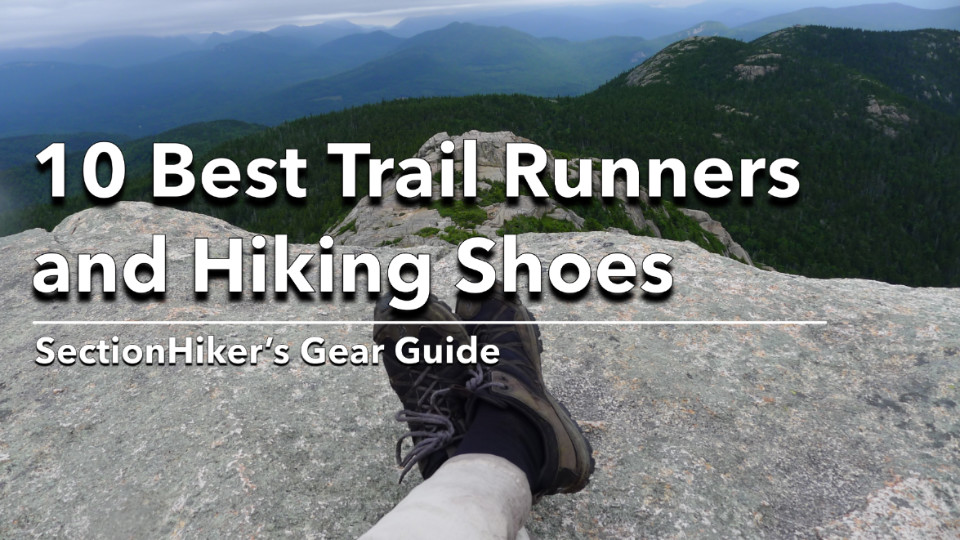
Trail runners and hiking shoes have become increasingly popular with hikers and backpackers because they’re lighter weight than hiking boots and dry faster. The biggest difference between trail runners and hiking shoes is that (low) hiking shoes, which tend to be heavier and more durable, can only be used for walking while trail runners can be used for walking and running. Given their popularity among hikers, it makes sense to list them together so you can weigh their pros and cons.
Preferences vary widely, however, and some hikers like waterproof footwear, ones with thick cushioning, more durable hiking shoes, or ultralight mesh trail runners that dry rapidly when they get wet. Regardless of your preferences, it’s important to choose footwear that fits well and is appropriate for the conditions you plan to hike in, especially in terms of temperature, terrain difficulty, and the weight of the loads you expect to carry.
| Men's Model | Type | Women's Model |
|---|---|---|
| Hoka Speedgoat 5 | Trail Runner | Hoka Speedgoat 5 |
| Altra Lone Peak 8 | Trail Runner | Altra Lone Peak 8 |
| Danner Trail 2650 GTX | Hiking Shoe | Danner Trail 2650 GTX |
| La Sportiva Ultra Raptor II | Trail Runner | La Sportiva Ultra Raptor II |
| Merrill Moab 3 | Hiking Shoe | Merrill Moab 3 |
| La Sportiva Wildcat | Trail Runner | La Sportiva Wildcat |
| Salomon Speedcross 6 | Trail Runner | Salomon Speedcross 6 |
| Brooks Cascadia 17 | Trail Runner | Brooks Cascadia 17 |
| KEEN Targhee WP III | Hiking Shoe | KEEN Targhee WP III |
| Oboz Firebrand II Low WP | Hiking Shoe | Oboz Firebrand II Low WP |
Here are the 10 best hiking shoes and trail runners that we recommend.
1. Hoka Speedgoat 5 Trail Runner
| Shop at REI | Shop at Amazon |
2. Altra Lone Peak 8 Trail Runners
| Shop at REI | Shop at Altra Running |
3. Danner Trail 2650 GTX Hiking Shoes
| Shop at REI | Shop at Amazon |
4. La Sportiva Ultra Raptor II Trail Runner
| Shop at REI | Shop at Amazon |
5. Merrell Moab 3 Hiking Shoes
| Shop at REI | Shop at Amazon |
6. La Sportiva Wildcat Trail Runner
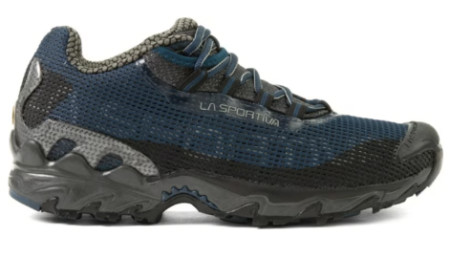
- Type: Trail Runner
- Cushion: Medium
- Drop: 12 mm
- Wide Sizes: No
- Durability: Average
| Shop at REI | Shop at Amazon |
7. Salomon Speedcross 6 Trail Runner
| Shop at REI | Shop at Amazon |
8. Brooks Cascadia 17 Trail Runner
| Shop at REI | Shop at Amazon |
9. KEEN Targhee III Waterproof Low Hiking Shoes
- Type: Hiking Shoes
- Cushion: Medium
- Drop: 8-10 mm
- Wide Sizes: Yes (Amazon)
- Durability: Excellent
| Shop at REI | Shop at Amazon |
10. Oboz Firebrand II Low Hiking Shoes
| Shop at REI | Shop at Amazon |
How To Choose Hiking Shoes and Trail Runners
There’s a lot of variety available when it comes to hiking footwear and ad people have a wide range of personal preferences. This is why we highly recommend that you try lots of different options if you’re making a new selection, so you can discover what your preferences are. Here are some guidelines about things you should consider when choosing between different hiking boots, trail shoes, and trail runners. For example, some thru-hikers can get an entire hike out of a pair of hiking shoes but will go through three or more pairs of trail runners to travel the same distance. That can get kind of expensive, as you can imagine.
Hiking Shoes vs Trail Runners: What’s the Difference?
Hiking shoes are really just meant for walking, while trail runners can be used for walking or running. That’s probably the simplest definition. The truth is there is a lot of overlap between the categories. In general however, you’ll find that hiking shoes are heavier and more durable, while trail runners wear out much more quickly because they’re lighter weight and made with less durable materials.
Sweat can lead to blisters
The buildup of sweat inside of hiking footwear and your socks can lead to blisters. When your socks stick to your skin, they can cause friction, and a friction burn, which is how blisters form. Breathability is key to preventing sweat build-up, which is why so many hikers prefer mesh hiking footwear since it dries while you wear it.
Black toenails indicate a poor fit
If your toenails turn black when you hike, it’s because your toes do not have enough room in the front of your footwear. Size up or select footwear that has a larger toe box by design. Altra and KEEN shoes and boots have an exaggerated-size toe box, which is why they’re so popular with hikers and backpackers.
After-Market Insoles
One-third of hikers and backpackers buy after-market insoles, such as Superfeet, to replace the insoles that come with their hiking boots, mids, trail shoes, and trail runners. These provide more protection, more arch support, and cup your heel to help prevent the lateral movement that can cause plantar fasciitis. They also last longer than factory insoles.
Waterproof/breathable footwear dries slowly
Waterproof/breathable footwear tends to dry much more slowly than non-waterproof footwear. While waterproof hiking boots and shoes are good for hiking in cold weather, it’s often more desirable to have a well-vented mesh shoe that dries quickly than one that stays wet for days and can lead to blisters and other discomforts.
Ankle Rolling
Many hikers opt for boots/mids because think they’re necessary for carrying heavier-weight backpacks and provide more ankle support than low hiking shoes or trail runners. While that was probably true when all hiking boots were made with heavy leather, modern hiking boots and mids are much softer and less supportive and are really just one step up from being trail or running shoes. While they can provide more assurance, you can still twist an ankle when wearing one. On the flip side, many hikers and backpackers are able to carry heavy packs and walk on rugged mountainous terrain in trail shoes and trail runners. In other words, there’s no right answer and you should decide for yourself, rather than follow anyone’s gospel truth.
Traction
Boot and shoe manufacturers make a big deal about traction and while it is important, it’s very difficult to prove that different sole compositions, lug angles, lug depth, Vibram or non-Vibram soles, blah, blah, blah, etc. make that big of an impact on traction. When push comes to shove, the only hiking traction that really matters is when you’re scrambling on wet rock or walking along a cliff edge. Even then, good footwork is probably more important, so develop that rather than relying on your shoes.
Toe and Foot protection
Hiking and backpacking can be tough on the feet, particularly around the toes and under the arch. It doesn’t affect everyone, but it can lead to injuries that take a long time to heal. Built-up areas around the toes, sometimes called toe kicks, are good if you hike in rocky terrain. A shank is usually a hard strip of nylon or plastic that runs under the arch and helps stiffen a shoe or boot. Rock plates and stone guards in the forefoot of the shoe provide additional protection from sharp stones that can bruise your feet, particularly when trail running.
Gaiters
Hikers wear gaiters to block sticks, stones, and other debris from getting into their shoes while they hike. But some shoes are more gaiter compatible than others. For example, if your gaiters have a strap that loops under your shoe, you’re going to want to have footwear that has an arch, so the gaiter strap doesn’t get destroyed by rubbing on the ground. Gaiters designed for trail shoes or trail runners may require gluing a velcro strip to the back of your heel to hold the gaiter in place. If this is the case, make sure there is a flat surface on the back of the heel so you can glue the velcro strip to it.
Wide Shoe Sizes
About 1/3 of all hikers require footwear in wide widths. Companies such as Merrell, KEEN, Brooks, and Vasque have the best selection of wide-width hiking footwear.
Check Out All of SectionHiker's Gear Guides!
- 10 Best Hiking Shoes and Trail Runners
- 10 Best 2-Person Backpacking Tents
- 10 Best 1-Person Backpacking Tents
- 10 Best Backpacking Stoves
- 10 Best Backpacking Water Filters
- 10 Best Lightweight Backpacks
- 10 Best Ultralight Backpacks
- 10 Best Backpacking Sleeping Bags
- 10 Best Ultralight Backpacking Quilts
- 10 Best Lightweight Backpacking Chairs
- 10 Best Backpacking Sleeping Pads
- 10 Best Backpacking Rain Jackets
- 10 Best Hiking Daypacks
- 10 Best Hiking Pants
- 10 Best Trekking Poles
 SectionHiker.com Backpacking Gear Reviews and FAQs
SectionHiker.com Backpacking Gear Reviews and FAQs 
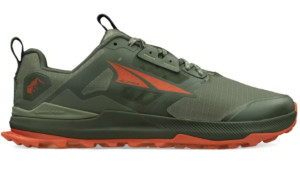
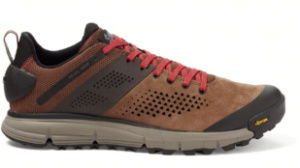
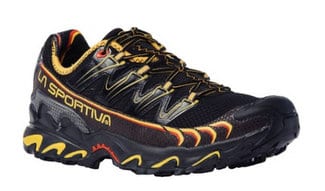
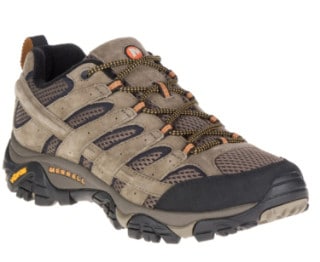
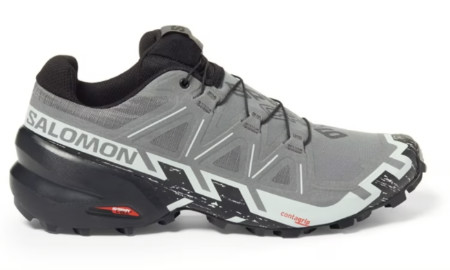
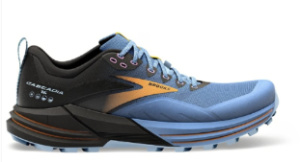
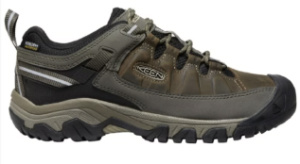
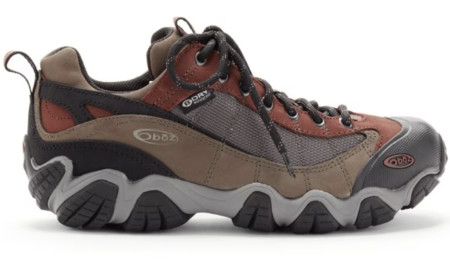
To your well chosen list Philip, I would add Topo Athletic Terraventure. I wore Lone Peaks a while a few years ago, but poor durability, poor wet traction and lack of arch support caused me to look around (now Long Peak is a better shoe, but still minimal arch support- their rep said they intend that).
Topo has better quality materials and durability, very good arch support (no need to buy Superfeet). Very wide toe box, minimal drop – 3mm, rock plate protection, very grippy sole. They fit me like they were molded to my foot. Lone Peaks never did. Fit isn’t everything, but it’s what matters first!
I broke a big toenail hiking with them, so the protection wasn’t what I was looking for. But I do have friends who swear by the too.
When it comes to insoles – I take matters into my own hands and a third party product like superfeet. With the exception of Oboz, the factor insoles that ship with hiking shoes and trail runners are foam crap.
I used Topo Ultraventure 2 last year on all my walks and I rated them the best shoe I have ever used. So good I have a new pair ready for this year’s hikes
Or any shoe from Topo really. I hiked in the Pursuits last year, and they were fantastic. I maybe missed having a rock plate though. Picked up the Terraventure 4’s for this year with REI’s member coupon (they sold out fast!). The toe protection looks plenty beefy to me, no different than the last pair or Lone Peaks I had in 2022. Probably more substantial since that was one of the first failure points of that shoe. Maybe they upgraded it from the 3? The Traverse also looks like a fantastic shoe, a trail runner specifically designed for hiking, but REI was sold out of them. Seems like the line span of Topo’s is how quickly the tread wears down instead of how soon the upper starts tearing, which I love. Nothing drives me more nuts than a shoe that’s falling apart with plenty of tread left on the outsole (looking at you, LP 5’s).
I have never heard anyone describe the speedboats as having a “wide toe box.” The main complaint most people have about the speedboats is that they are very narrow, even in the wide width…
I agree. I used the Speedgoat 4’s. I had to buy a mens wide to accommodate a bunion I have. I thought I finally found what would be a close to perfect shoe. The new version of Speedgoats is narrower, even in the mens wide. Also, the volume of the shoe is less than the previous model and it puts pressure on the top of my foot. Topo’s curve upward at the toe putting pressure on the bunion. The Altra’s, even with Oboz inserts, don’t have enough structure and my feet ache by the end of the day. I sure wish the Speedgoats wouldn’t have changed.
Why not HOKA MAFATE SPEED – I ranking it as one of the Hiking shoes on this planet
That’s why we let people comment!